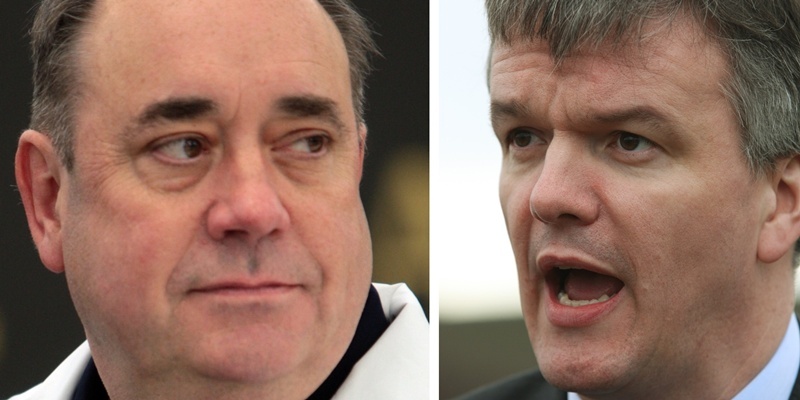Scottish secretary Michael Moore has challenged Alex Salmond to answer “key” questions about how an independent Scotland would operate.
The Liberal Democrat MP used a speech to the David Hume Institute in Edinburgh to outline the most comprehensive rebuttal to the nationalist movement provided to date by a UK Government minister.
Signalling the end of the phony war leading up the SNP’s promised referendum, he insisted nationalism was a “minority pursuit” and warned the uncertainty over the specifics of the referendum could be damaging.
The speech will widely be seen as the UK Government moving to combat the SNP’s strengthened position following their historic election victory in May.
There are fears in unionist circles that the unpopularity of the Tory-Lib Dem coalition at Westminster and the relative weakness of unionist parties at Holyrood could help the nationalists win the referendum vote.
But Mr Moore insisted the popularity of independence was not on the rise and called on community, civil and political figures from across Scotland to unite to save the union.
“Whatever factors played a part in May’s election result it was not a rise in support for Scottish independence,” he said.
“That is not to say we should ignore the challenge. On the contrary, we should take it on.
“So when the Scottish Government does come forward with its referendum proposals, there will need to be proper scrutiny.
“From politicians yes, but also from business, from civil society, from all groups and individuals with an interest in Scotland’s future.”‘Fundamental’Accusing the SNP of being “uncharacteristically shy” in setting out its vision of independence, he demanded answers on when the referendum would be held, what form it would take and who would run it.
He also posed six specific questions about finances, banks, currency, EU membership, defence policy and pensions in an independent Scotland.
“All of these are fundamental to the notion of an independent Scotland,” he said.
“And given that independence is the SNP’s key article of faith and that a referendum was a core policy pledge we are all, as Scots, entitled to know what the answers are.
“Because here in Scotland we benefit massively from our position in the United Kingdom, in terms of economic strength, international standing and so much more.
“And until the SNP sets things out, the Scottish people are being asked to take a punt. Well, our future cannot be taken on trust it’s just too important.”
Mr Moore further defended his government’s treatment of Scotland and outlined what he believes are the enhanced benefits of devolution provided by the Scotland Bill, which is going through Westminster.
Despite supporting the extra powers for Holyrood, he promised the UK Government was determined to keep the union.
“What we can say with certainty is that whenever a referendum is held, this government will fight for a secure Scotland within a strong and prosperous UK,” he said.’Big, optimistic case'”We will make what the Prime Minister calls the ‘big, optimistic case’ for the United Kingdom.
“And I am confident that we will win the day.”
But SNP MP Dr Eilidh Whiteford attacked Mr Moore’s comments.
“The Liberal Democrats have totally lost their way,” she said.
“Instead of obsessing about the SNP, Michael Moore should focus on delivering the additional levers Scotland needs to improve the economy.
“Why is Michael Moore talking down the Scottish Government when he should be speaking up for Scotland?”
First Minister Alex Salmond has said the independence referendum, which was a key pledge of the SNP manifesto, will be held in the second half of this parliamentary term.
The six questions set by Mr Moore for the government to answer are:What regulation would be applied to our banks and financial services and who would enforce it? Which currency would Scotland adopt and how could entry and influence be guaranteed? How would membership of international organisations such as the EU be assured? What would be our defence posture and the configuration of our armed forces? How many billions would we inherit in pension liabilities and who would pay for future pensions? How much would independence cost what is the bottom line?
